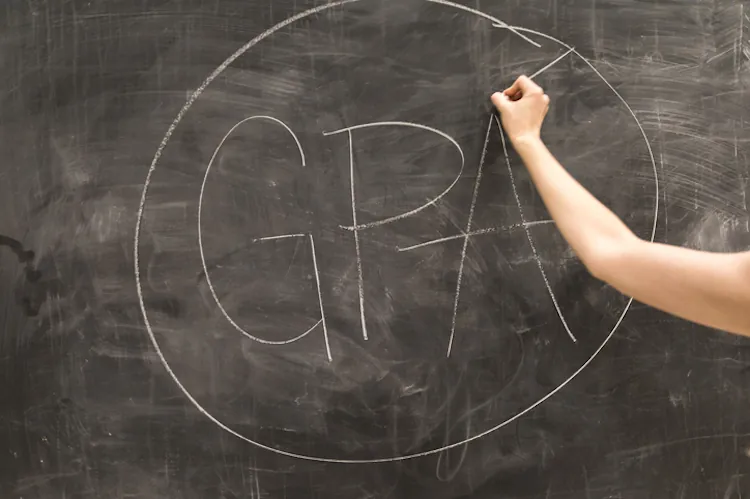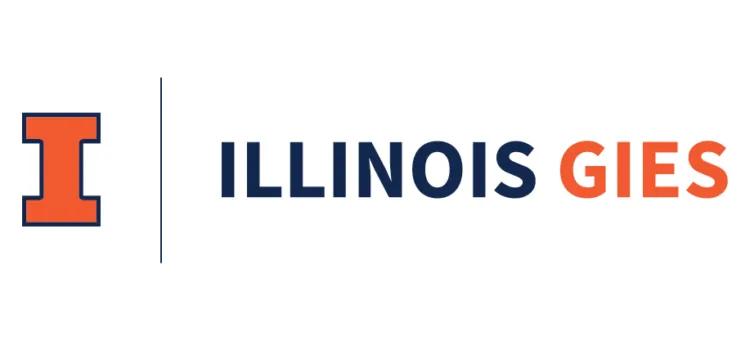
Does GPA matter in an MBA application? Not as much as other elements
Probably the most interesting thing about undergraduate grade point average as a component in MBA class profiles is that some business schools continue to subscribe to the view that publishing the full ranges of scores submitted by admits has the potential to give bearers of low GPAs hope of future admission.
More schools should subscribe to this view. It’s a great talking point for the school: Did you hear that someone got into Northwestern University with a 2.4? How about the lucky person who got into Dartmouth College with a 2.6? Or the presumably stellar candidate in every other facet who got into the University of Chicago with a 2.7?
These are all real GPAs at the lower end of ranges reported for the MBA Classes of 2021. These three schools, along with NYU Stern School of Business, are the only top-25 B-schools that report full GPA ranges — and once again in 2022 they did not disappoint. Imagine getting into the Kellogg School of Management, ranked No. 4 in the U.S. by Poets&Quants, with a 2.6 GPA — well, someone did it last fall! What did that candidate’s application look like? How did she or he overcome the deficit and grab the admissions team’s attention, and more importantly, earn their respect?
What about the person who scored admission to No. 9 Tuck School of Business with a 2.7 last fall? Or the applicant who got into the Booth School, the No. 2 MBA program in the U.S., with a 2.4? Even the 80% ranges, which far more schools prefer, can be enlightening in this way: Carnegie Mellon Tepper School’s reaches down to 2.84, and Georgetown McDonough’s down to 2.82.
GPA: NOTORIOUSLY IMPERFECT AS A MEASURE OF CANDIDATE QUALITY
The second-most interesting thing about GPA is that just about every school in the top 50 and beyond publishes a class number, whether average or median. (Only three schools in our top 50 this year declined to publish at least an 80% range in the 2022 class profiles from which an average could be estimated: Texas A&M Mays, Rutgers Business School, and George Washington University.) And that may be where the interesting things end, because GPA is a notoriously imperfect way to measure the quality of a class or the chances of joining a future one.
Many schools, whether they broadcast their low-scoring admits or not, readily make room for admits who bring more to the table than undergraduate studiousness — as well they should — making GPA an easy number to both include and disregard. No wonder it’s almost always included, like average age of a cohort, yet so rarely talked about.
As longtime MBA admissions consultant Stacy Blackman has written: “There is no one ‘most important’ part of the MBA application. It’s the essays, interviews, and recommendations that ultimately reveal the person beyond the paper. Compelling essays, recommendations, and interviews can provide context for a low GMAT score or GPA. But the reverse is not true. Strong numbers will never make up for weak essays or a disorganized, negative recommendation.”
ACROSS THE LAST SIX YEARS, 22 OF 50 SCHOOLS HAVE SEEN GPA GROWTH
So we have a wealth of data that doesn’t mean much. What do we do with it each year? Some perfectly harmless exercises in number crunching, of course!
Once again this year, as they have each of the past six years, Stanford Graduate School of Business boasts the highest class GPA, 3.76. Over the last six years Stanford's class GPA has not dipped below 3.70; it reached a high of 3.80 in 2020. Stanford this year was followed by Northwestern Kellogg and Harvard Business School, both at 3.70, Yale School of Management (3.69), and UC-Berkeley Haas School of Business (3.64).
See the next pages for complete tables of GPAs at the top 50 schools going back to 2017. From then to 2022, 22 of P&Q's top 50 have seen the undergraduate GPA of their MBA classes rise, 16 have seen it drop, and seven are even, with exactly the same score. Five schools haven't published enough data for comparisons. In the top 25 in that span, four schools are even, 10 positive, and 10 negative; last year it was two even, 18 positive, and five negative.
Eight schools in the top 50 had increases of 0.10 or more (see table above) between 2017 and 2022; last year in looking at the span between 2016 and 2021, the number of schools that could claim that was nine. The biggest increase was at Michigan State University's Broad College of Business, from 3.20 to 3.40 (+0.20); in the top 25 it was NYU Stern School of Business, from 3.48 to 3.62 (+0.14) and MIT Sloan, which publishes a GPA median and which saw it grow from 3.49 to 3.62 (+0.13).
The biggest decline in GPA, meanwhile, occurred at Georgia Tech's Scheller College of Business, which dropped by 0.20 from 3.40 to 3.20. The biggest drop-off in the top 25 was at Georgetown McDonough School of Business, down 0.08 from 3.37 to 3.29.
FROM 2021 TO 2022, ONLY 7 TOP-25 SCHOOLS SAW GPA GAINS
In the near term, it appears GPA scores are slipping. From year to year 2021-2022, 14 schools in the top 50 are even (up from nine last year), but only 13 are positive including seven in the top 25, down from 26 and 16, respectively. Eighteen schools, meanwhile, are negative including nine in the top 25, up from 15 and six, respectively.
The University of Georgia Terry College of Business reported the biggest one-year increase, up 0.11 from 3.44 to 3.55; in the top 25, two schools tied for the biggest GPA gain: Columbia Business School (+0.10 from 3.50 to 3.60) and Wash University in St. Louis' Olin Business School (+0.10 from 3.30 to 3.40).
The biggest one-year decline occurred at Arizona State's W.P. Carey School of Business, where the MBA class's undergraduate GPA slipped 0.24 from 3.63 to 3.39. Also notable was Georgia Tech's drop-off of 0.20 from 3.40 to 3.20. In the top 25, Georgetown dropped 0.06 from 3.35 to 3.29.
MBA CLASS PROFILES ARE GETTING MORE DIVERSE, ALONG WITH THE CLASSES THEY REFLECT
MBA class profiles have changed a lot in recent years, mostly for the better. They are acutely more detailed in measuring the diversity of a class, with most top schools now including ethnicity information that conforms to both federal guidelines and multi-identity reporting standards. Additional new measures of the diversity and experience of each particular group of strangers thrown together to learn advanced management principles include the percentage of first-generation college students in the class, the proportion who already have advanced degrees, the percentage with military backgrounds (active or veteran), and the percentage who identify as LGBTQ+. Some schools now include marriage status, or the percentage of students arriving with partners.
After test scores and GPA, only one other metric is ubiquitous: work experience. No school omits the average, in years or months, of work completed by a class before joining its hallowed halls. See the table above for what is and isn't available from the top 25 B-schools.
And see the next pages for undergraduate GPAs at the MBA programs of the P&Q top 50 across the last six years.










